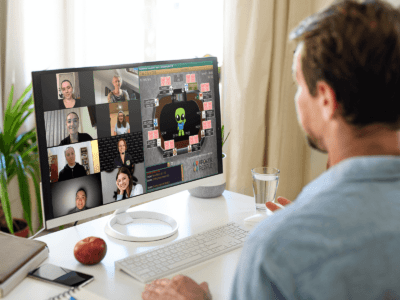I don’t know about you, but the first day back at work after pushing the clock ahead an hour hurts. It hurts a bit more to get out of bed, and it hurts to get through the day without a seventh cup of coffee (I’m well caffeinated).
Let’s use this change of personal energy to reminder us of the importance of focusing on team energy. One of the best ways to build team energy is to deliver information to your team members in ways that they can connect with. We live in a culture of learners, and every learner learns differently. Some learn kinesthetically (by doing), some visually (by seeing), others mathematically (through numbers and data), and there are other ways to learn. In fact, Dr. Howard Gardner wrote a break-out text on education called “Frames of Mind” all about the seven (now eight) multiple intelligences.
In delivering team building programs for groups, I’ve found that finding the right fit of activity is of essential importance before a group even comes together. Figuring out the line of best fit for your group’s learning styles is job one in selecting an effective team or other group learning experience.
Below I have described the 8 different kinds of learning styles. As you read them, think about your team members. Who fits into which category? From there, try to identify the types of learning styles that are most prevalent in your group (mostly “kinesthetic,” mostly “mathematical logical”). This will allow you to choose an activity to do with your group that will best inspire them. By recognizing learning styles, you can make the most of your team building efforts. For example, some groups will get more out of a physically competitive activity with awards at the end, while others may get more out of investigating, following clues, and solving a mystery.
1. Interpersonal Learner – The “People Person”
Encourage discussions, presentations, and mentoring. Likes to work with others and can both guide and influence a situation to meet their needs. They love personal feedback and are very conscious of verbal and non-verbal cues.
2. Intrapersonal Learner – The “Thinker”
Provide opportunities for self reflection, research, and visioning. They are internally motivated and like to know how their roles connect with others. The thinker enjoys corresponding via email. Make sure you give these people some space to work.
3. Kinesthetic Learner – The “Doer”
Get ready to go to these folks with short explanations. They like getting involved with props and tangibles to figure out a job. They like On-the-Job Training, role playing, and practicing the task. They like to build models and connect their actions to everyday life.
4. Mathematical Learner – The “Numbers” Learner
Logical by nature, the numbers learner likes to see things in facts and figures, step-by-step, and logically presented with concise details. This person will ask a lot of “why” questions and enjoy searching for answers through experimentation.
5. Verbal Linguistic Learner – The “Word” Learner
This learner loves to have things explained – both by you and then by themselves for clarification. They love to present material, put together policy handbooks, tell stories, and use humor/irony.
6. Visual Learner – The “See it” Learner
Exploring maps, charts, movies, illustrating learning points are preferred by this learner. Encourage them to spearhead designing displays, marketing brochures, timelines, concept maps, documentations and handouts.
7. Musical Learner – The “Music” Learner
Probably the one you’ll meet least often in a group. These folks like to demonstrate things in patterns, catchy lingo, rhymes, mnemonics and the like. They like to see the logical sequence and flow of things.
8. Naturalistic Learner – The “Nature” Learner
Work towards using analogies of nature to explore concepts. These folks relate to cycles, interconnectedness, and cause and effect relationships. They connect everything to real life and encourage them to classify things in their proper place.
To learn more, download my book, Teambuilding with Intelligence for free by clicking here and using coupon code FG53F. Then start to build your team design plan with the individual learning styles of your team members in mind. You will create engaging events that will deliver longer term results when the people and their individual styles are placed first.










